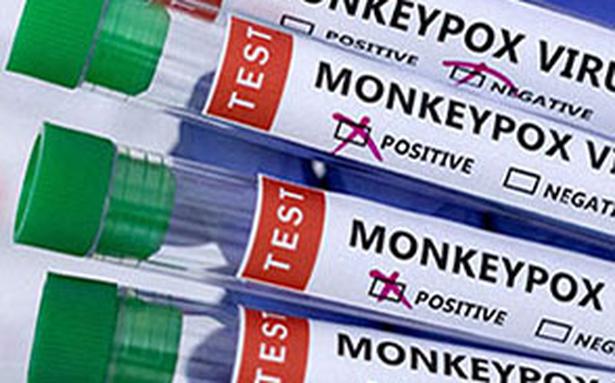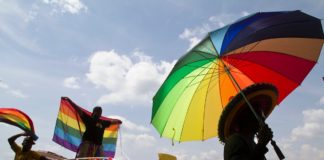
By declaring monkeypox a public health emergency of international concern, how does the WHO plan to tackle and contain its spread?
By declaring monkeypox a public health emergency of international concern, how does the WHO plan to tackle and contain its spread?
The story so far: Monkeypox, an uncommon viral infection that was primarily restricted to some countries in western and central Africa as well as travellers to these countries has now spilled overdriven by zoonotic events. The disease made headlines with its international spread with over 16,000 cases in over 75 countries to date, primarily driven by human-to-human contact, spreading predominantly among, but not exclusively in gay, bisexual and MSM (men who have sex with men) communities.
On July 23, 2022, amid a rapid rise in monkeypox cases across the globe, Dr. Tedros Adhanom, Director General of the World Health Organization (WHO) declared the disease outbreak a Public Health Emergency of International Concern (PHEIC).
What is monkeypox and what causes the disease?
First discovered in 1958, in monkeys at the Statens Serum Institute in Denmark, monkeypox is a zoonotic virus that can infect humans as well as other animals, including rodents and other primate species. Ever since the first case in humans was identified in 1970, in the present Democratic Republic of the Congo, the virus has become endemic in parts of Central and West Africa primarily driven by zoonotic spillovers. Despite being denoted as ‘monkeypox’, the actual origin and source of the disease are unknown and therefore a misnomer in many ways. The virus belongs to the same family of viruses as variola — the virus that causes smallpox. The disease presents with symptoms that are similar to those previously seen in smallpox patients, although it is less contagious and less severe.
Symptoms of monkeypox include fever, headache, muscle pain, and lethargy along with rashes and blisters commonly on the face, palms, feet, mouth, eyes, or genitalia. These symptoms generally appear within two weeks since infection but can last for two to four weeks, with severe cases occurring mostly among children. In most cases, monkeypox is a self-limited disease that resolves spontaneously without any specific treatment. However, newborns, young children, and people with underlying immune deficiencies may be at a higher risk of developing more severe symptoms.
How is the virus transmitted?
The virus can be transmitted from both animals to humans and between humans. Animal-to-human transmission of the virus can result from close contact with blood, fluids, or skin lesions of infected animals. Human-to-human transmission could happen through close contact, and through body secretions, skin lesions, or contaminated articles of individuals infected with monkeypox.
Close human contact during sexual activities is believed to be a driver of the current spread of the disease, as evidenced by its predominant spread in gay, bisexual and MSM communities.
How is the current outbreak different?
Since its initial detection in humans in 1970 in Africa, the first outbreak of monkeypox outside of Africa was reported in 2003 in the U.S. where multiple cases were found to be linked to close contact with infected imported animals. Recently, in May 2022, several cases of the disease were reported from regions where monkeypox was not endemic, and most cases had a history of travel to Europe or North America and not Africa. Before the current outbreak, monkeypox was predominantly reported from Africa while all cases reported in patients from other countries were linked to travel to regions where the disease was commonly found or because of contact with imported animals.
As of now, no links between these new cases of contact with infected animals have been established. The number of confirmed monkeypox cases increased more than 70% from late June through early July 2022, with a majority of the case burden being in Europe. There is, however, limited knowledge about the source and transmission routes of the 2022 outbreak as well as the changes in the virus that helped it infect humans more than before, making monkeypox a disease of global public health importance.
Watch | What is the monkeypox virus?
A video explainer on the moneypox virus.
| Video Credit: The Hindu
What does declaring monkeypox a health emergency entail?
The WHO defines a PHEIC as a disease outbreak that “constitutes a public health risk through the international spread of disease” which may require an immediate and coordinated international response. Since 2009, the WHO has made seven PHEIC declarations including the ongoing COVID-19 pandemic. This designation entails accelerating international efforts to contain the spread of the disease before it escalates into a pandemic.
This would mean promoting countries to devise efforts to control transmission and coordinate sharing of key resources such as vaccines and therapeutics apart from heightened contact tracing, diagnosis, and vaccination. While studies are underway to understand the epidemiology, transmission routes, and clinical presentations of the disease, the WHO will offer support to affected nations for developing an effective outbreak response and surveillance as well as prevention and therapeutic strategies against monkeypox.
There are a few factors that are advantageous. Firstly there is a wealth of information on the virus and methods to contain the spread, as well as management of the disease, thanks to researchers from Africa who have been able to contain outbreaks for decades. Additionally there is availability of a fairly effective vaccine, despite the logistical issues along with a widely available infrastructure for molecular diagnosis, thanks to the COVID-19 pandemic. Genomic surveillance of the pathogen provides a unique opportunity to trace the contact networks as well as evaluate the continued evolution of the virus. While it is heartening to note that a large number of genomes of monkeypox from the present outbreak has been available in public domain, there is a significant disparity in the numbers from developing countries, especially from Asia including India.
What are the current prevention and treatment options against monkeypox?
There are no specific treatments available for monkeypox. Clinical management of monkeypox includes relieving symptoms and managing complications and preventing long-term effects. It is also not currently understood if a previous monkeypox infection lends protective immunity against future infections. However, due to the genetic similarities of smallpox and monkeypox viruses, vaccines and antiviral agents used for the worldwide eradication of smallpox can also protect against monkeypox.
The WHO reports that vaccination against smallpox is approximately 85% effective in preventing monkeypox and thus prior immunisation against smallpox may lead to mild disease. Although the original smallpox vaccines are not available to the general public, newer vaccines have been developed of which one was approved in 2019 for monkeypox prevention. Studies are now being conducted to understand the effectiveness and feasibility of vaccination in preventing monkeypox.
While the world discusses the nuances of why Dr. Tedros declared monkeypox as a global health emergency despite the committee voting against it almost a month ago, it is possibly time for the world to realise that with global warming, increasing human-wildlife conflicts across the globe and and ubiquitous global travel, efforts for global public health co-operation and sharing of resources never had a better time. As we come out of a global pandemic, there is never a better time to be prepared for newer challenges.
The authors are researchers at the CSIR Institute of Genomics and Integrative Biology (CSIR-IGIB), Delhi
THE GIST
Ever since the first case of monkeypox in humans was identified in 1970, in the present Democratic Republic of the Congo, the virus has become endemic in parts of Central and West Africa.
The designation of monkeypox as a PHEIC entails accelerating international efforts to contain the spread of the disease before it escalates into a pandemic. This would mean promoting countries to devise efforts to control transmission and coordinate sharing of key resources.
There are no specific treatments available for monkeypox. Clinical management of monkeypox includes relieving symptoms and managing complications and preventing long-term effects.
- On July 23, 2022, amid a rapid rise in monkeypox cases across the globe, Dr. Tedros Adhanom, Director General of World Health Organization (WHO) declared the disease outbreak a Public Health Emergency of International Concern (PHEIC).
- First discovered in 1958, in monkeys at the Statens Serum Institute in Denmark, monkeypox is a zoonotic virus that can infect humans as well as other animals, including rodents and other primate species.
- The number of confirmed monkeypox cases increased more than 70% from late June through early July 2022, with a majority of the case burden being in Europe. There is, however, limited knowledge about the source and transmission routes of the 2022 outbreak as well as the changes in the virus that helped it infect humans more than before, making monkeypox a disease of global public health importance.








